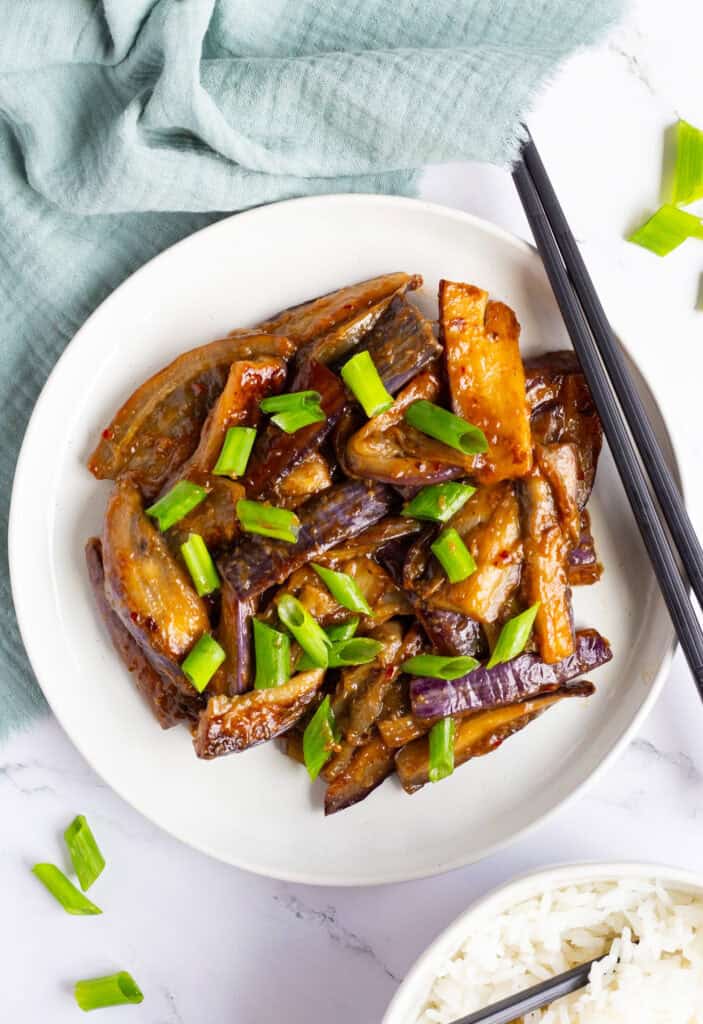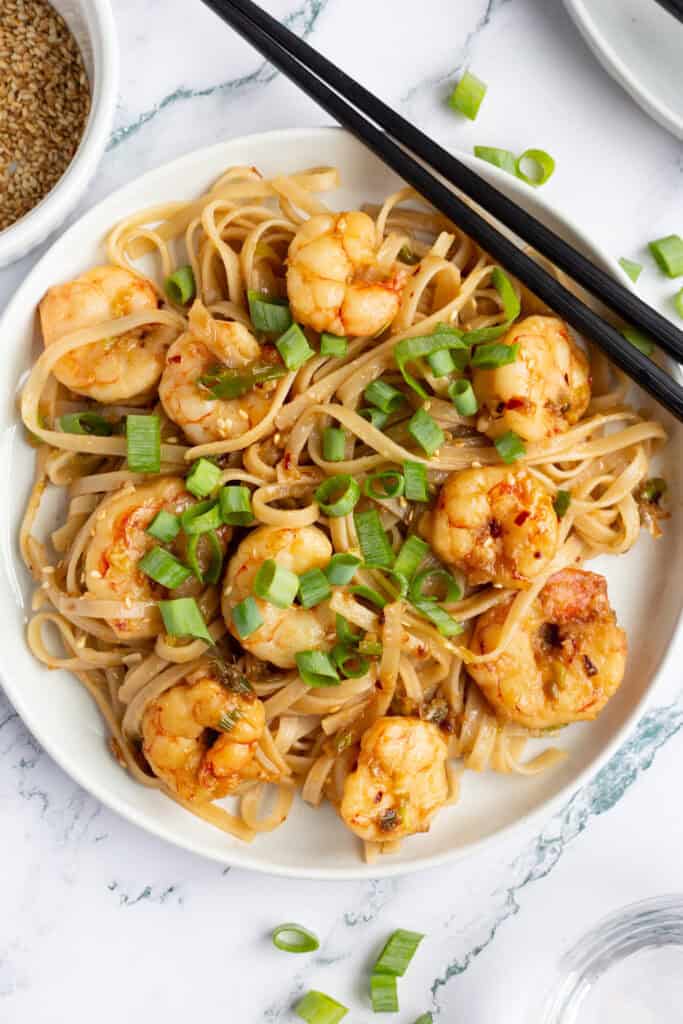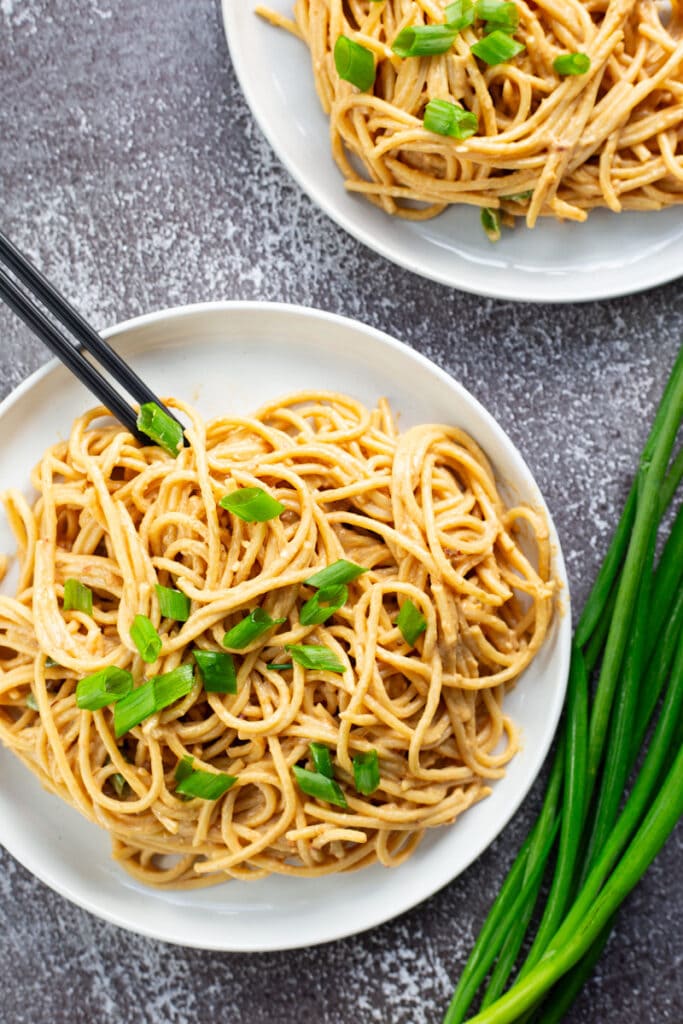Asian Garlic Sauce
This flavorful Asian garlic sauce is tailor-made for Chinese eggplant but can also be used for just about any vegetable. It’s a great alternative to takeout and is both pungent and sweet!
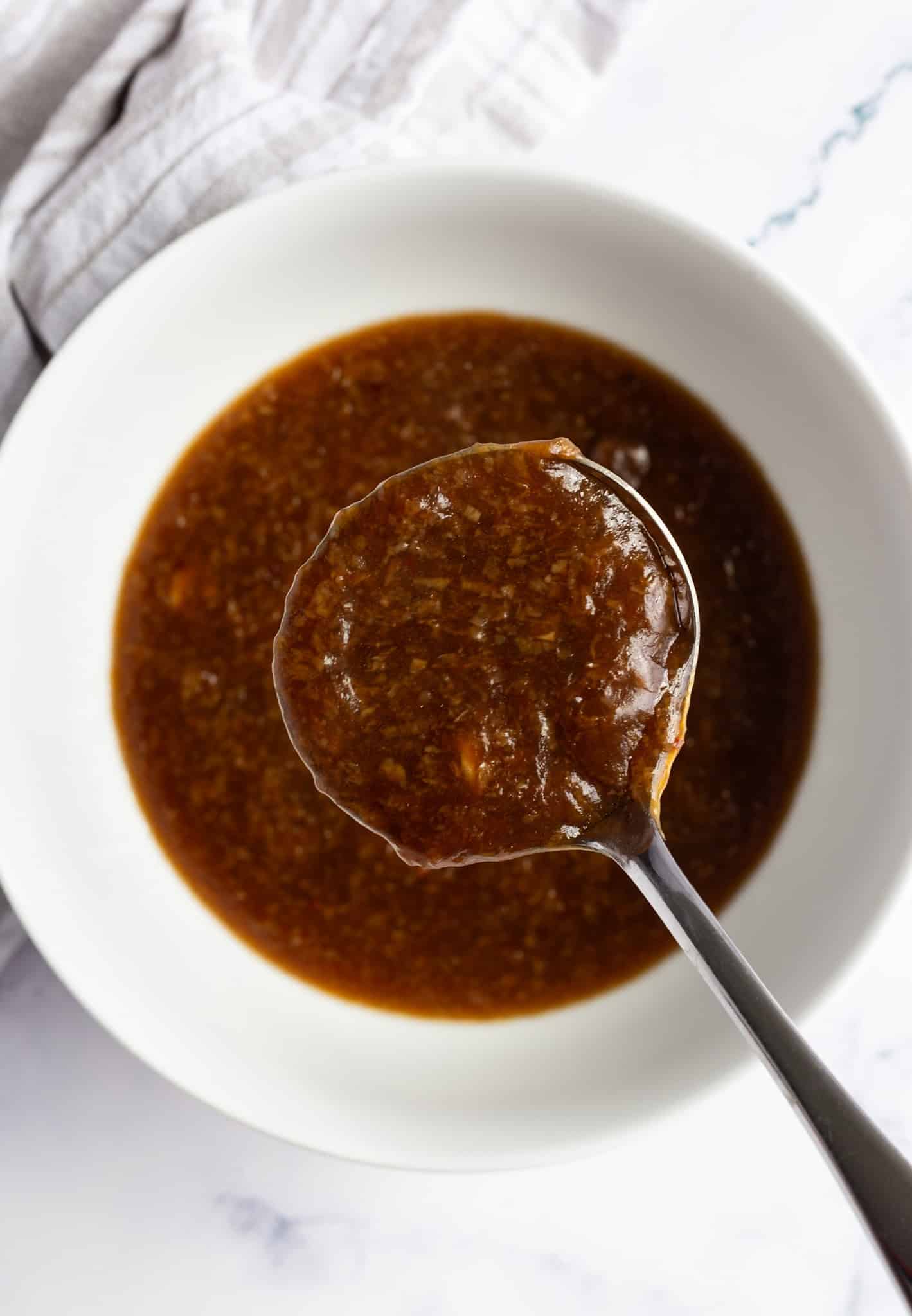
This post may contain affiliate links. Please read our affiliate disclosure.
If you’re looking to elevate your veggies, adding this Asian garlic sauce recipe to your arsenal is a good idea. Almost entirely made with pantry ingredients, this zippy sauce is as economical to prepare as it is delicious. It also comes together quickly, with just a small amount of grating required.
Asian garlic sauce is commonly found in Chinese takeout and is also often called Chinese garlic sauce. If you live in the U.S., you may be familiar with it as part of the eggplant in garlic sauce you might see on some menus. It’s deeply flavorful and transforms eggplant into something special. Serve it on top of fluffy white rice, and it’s even better as the rice absorbs it.
Tangy, with a touch of sweetness and heat, this Asian garlic sauce can be easily doubled if you like a lot of sauce or want more handy for another night. You can also use it to dress up other vegetables, including broccoli, peppers, and carrots.
Why You’ll Love This Asian Garlic Sauce
- It’s super easy to make: You just need to carve out a few minutes to make this recipe.
- You can use it on a variety of veggies: Add it to broccoli, peppers, carrots, and more. You can even use it for pork and noodle dishes.
- You can easily double–or triple–it: This sauce lasts for several days in the refrigerator and also freezes well.
Ingredients You’ll Need
- Low-Sodium Vegetable Broth: You can also use low-sodium vegetable stock.
- Low-Sodium Soy Sauce: Use coconut aminos for a gluten- and soy-free version.
- Rice Vinegar: Apple cider vinegar or white vinegar can be substituted in equal ratios.
- Dark Brown Sugar: Light brown sugar is also OK to use.
- Sesame Oil: Use untoasted sesame oil.
- Red Pepper Flakes: Substitute with a touch of cayenne pepper if you don’t have red pepper flakes.
- Corn Starch: Use tapioca starch if you’re allergic to corn.
- Neutral Oil: Vegetable and canola are common neutral oils.
- Fresh Garlic: Make sure to use fresh garlic and not garlic powder.
- Fresh Ginger: Make sure to use fresh ginger and not dehydrated ginger.
See the recipe card below for more information on ingredients and quantities.
How to Make Asian Garlic Sauce
- Whisk the ingredients together: With the neutral oil, garlic, and ginger set aside, add the remaining ingredients to a bowl and whisk them together.
- Cook the garlic and ginger: Heat the vegetable oil in a pan and cook the garlic and ginger. Add the sauce mixture, stir everything together, and bring to a boil.
- Thicken the sauce: Reduce to a simmer and cook the sauce until it thickens.
Pro Tips
Use a small nonstick pot or pan: A non-coated pan may cause the garlic to stick; it may also cause the sauce to burn around the edges when bringing it to a boil. A nonstick pot works best here.
Allow it to cool completely if making it ahead of time: Let the sauce cool to room temperature before storing it in the refrigerator until use.
Suggestions for Variations and Substitutions
- You can substitute the dark brown sugar with light brown sugar.
- Vegetable stock is OK to use instead of broth. You can also use chicken stock/broth.
- Feel free to add more garlic, if you’d like.
- Use another starch, like tapioca or potato, or arrowroot flour if you’re allergic to corn (starch).
Recipe FAQs
Asian garlic sauce can be used for a variety of things, including dressing up certain vegetables, especially eggplant and broccoli, when used in Asian-inspired recipes. You can also add it to pork, chicken, and noodle dishes.
Not necessarily, but you can make it so by using gluten-free versions of the vegetable broth, soy sauce, and rice vinegar found in this recipe. However, if you need to take extra precaution, ensure that no contamination exists for normally gluten-free ingredients like brown sugar.
Storage
Refrigerator
Store leftovers in an airtight container in the refrigerator for up to 5 days. Reheat the sauce in a microwave-safe container or by adding it to veggies (or whatever you add it to) and heat it through that way.
Freezer
Freeze in a freezer-safe container for up to 2 months. Defrost in the refrigerator.
More Sauces and Condiment Recipes
If you love this recipe, I’d appreciate it if you could take a moment to review it below. You could also tag me on Instagram (@forcarbssake) with a picture of your finished dish!
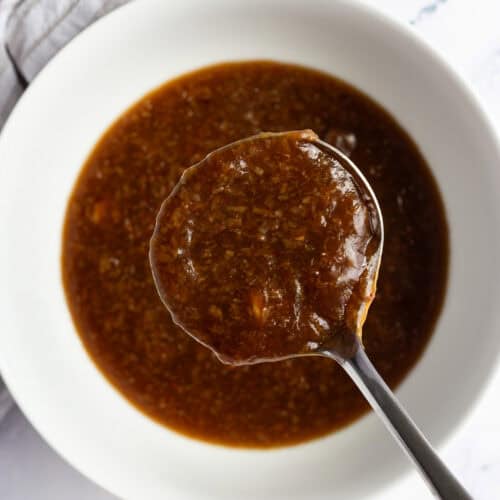
Asian Garlic Sauce
Ingredients
- ½ cup low-sodium vegetable broth
- 3 tablespoons low-sodium soy sauce
- 1 tablespoon rice vinegar
- 2 teaspoons dark brown sugar
- ½ teaspoon sesame oil
- ¼ teaspoon red pepper flakes, or more to taste
- 1 tablespoon corn starch
- ½ tablespoon vegetable or canola oil
- 3 teaspoons fresh garlic, grated
- 2 teaspoons fresh ginger, grated
Instructions
- Add the ingredients—EXCEPT for the vegetable oil, garlic, and ginger—to a bowl and whisk everything together. Set aside.½ cup low-sodium vegetable broth, 3 tablespoons low-sodium soy sauce, 1 tablespoon rice vinegar, 2 teaspoons dark brown sugar, ½ teaspoon sesame oil, ¼ teaspoon red pepper flakes, and 1 tablespoon corn starch.
- To cook the garlic sauce, heat the vegetable oil in a small nonstick pan. Add the grated garlic and grated ginger and cook for 1 to 2 minutes, stirring often. Cooking it for longer will mellow the garlic if you want it sweeter. Pour in the sauce mixture you set aside earlier, stir everything together, and bring to a boil. Reduce to a simmer and let the sauce cook for 3 to 5 minutes until it thickens. Remove from the heat.½ tablespoon vegetable or canola oil; 3 teaspoons fresh garlic, grated; 2 teaspoons fresh ginger, grated
- Use the Asian garlic sauce for Chinese or graffiti eggplant or on your favorite vegetables. Enjoy!

